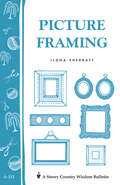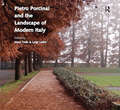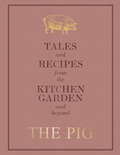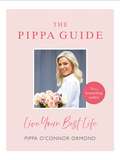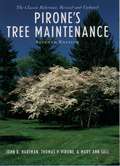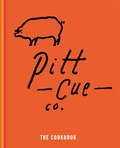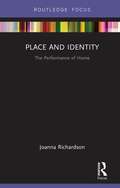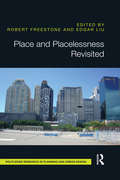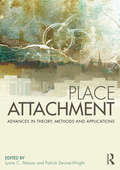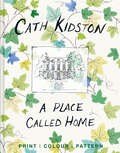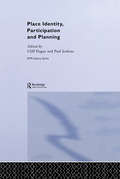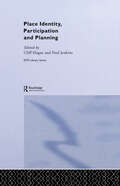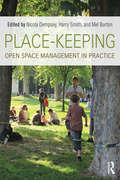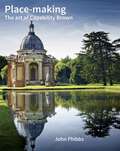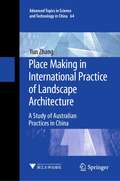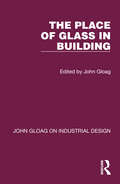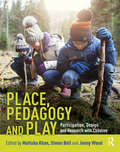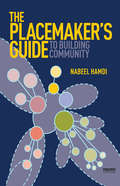- Table View
- List View
Picture Framing: Storey's Country Wisdom Bulletin A-153 (Storey Country Wisdom Bulletin)
by Ilona SherrattSince 1973, Storey's Country Wisdom Bulletins have offered practical, hands-on instructions designed to help readers master dozens of country living skills quickly and easily. There are now more than 170 titles in this series, and their remarkable popularity reflects the common desire of country and city dwellers alike to cultivate personal independence in everyday life.
Pietro Porcinai and the Landscape of Modern Italy
by Marc Treib Luigi LatiniBorn in Florence in 1910, Pietro Porcinai grew up on the classic grounds of the Villa Gamberaia in Settignano where his father served as head gardener. Although he studied agriculture in college, Porcinai’s true interest lay in the landscape architecture practice he founded in 1938. Early projects centered in the area of Arezzo, whose style reflected modernÂized traditional models. In the postwar era the office flourished, producing modern gardens of remarkable design and use of plants. In these works, Porcinai convincingly demonstrated the affinity between historical architecture and landscapes unÂcompromisingly modern. During his long and productive career he also consulted on autostrada planning, and designed public parks, memorials, and even a Pinocchio theme park-at times collaborating with noted architects such as Renzo Piano, Carlo Scarpa and Oscar Niemeyer. This book, the first English-language study on Pietro Porcinai provides a comprehensive and richly illustrated overview of his life and remarkable achievements.
Pietro Porcinai and the Landscape of Modern Italy
by Marc Treib Luigi LatiniBorn in Florence in 1910, Pietro Porcinai grew up on the classic grounds of the Villa Gamberaia in Settignano where his father served as head gardener. Although he studied agriculture in college, Porcinai’s true interest lay in the landscape architecture practice he founded in 1938. Early projects centered in the area of Arezzo, whose style reflected modernÂized traditional models. In the postwar era the office flourished, producing modern gardens of remarkable design and use of plants. In these works, Porcinai convincingly demonstrated the affinity between historical architecture and landscapes unÂcompromisingly modern. During his long and productive career he also consulted on autostrada planning, and designed public parks, memorials, and even a Pinocchio theme park-at times collaborating with noted architects such as Renzo Piano, Carlo Scarpa and Oscar Niemeyer. This book, the first English-language study on Pietro Porcinai provides a comprehensive and richly illustrated overview of his life and remarkable achievements.
The Pig: Tales and Recipes from the Kitchen Garden and Beyond
by Robin HutsonThe Pig is a collection of restaurants with rooms in Hampshire, Devon, Dorset and Somerset - and soon in Kent, West Sussex and Cornwall. Now, everyone can enjoy The Pig from the comfort of their own homes. Among the pages of The Pig you will find an idiosyncratic, seasonal approach to the good life, with delicious recipes, how-to guides, tips, tricks and stories.Inside the pages of The Pig you will find: Classic recipes from Nan's rice pudding to proper fish pie, porchetta, gammon with parsley sauce, devilish devilled kidneys on toast, a right old eton mess and even a pink blancmange bunny.The Pig's Guide to Pigs from identifying different breeds and selecting the best cuts of meat to making your own sausages, crackling and charcuterie. How to pickle, forage and identify edible flowers and suggestions on how to bring the weird and wonderful vegetables, fruits and salads from the garden into the kitchen. Noble wine, simple food from classic cocktails to modern twists and all the best accompaniments. Interior design recreating the comfort and elegance of The Pig at home.Setting the scene, The Pigs top tips on hosting your own festivals, summer feasts and winter gatherings, including creating the perfect playlist to the best recipes to cook outdoors. Praise for the book:'For us at home, the cookbook provides the perfect inspiration.' The Telegraph Magazine Praise for The Pig Hotels:Rick Stein: 'Dinner, bed and breakfast at The Pig, any Pig, is a comforting thought of some lovely flavoured pork, a British abundance of vegetables and some fabulous red wine.' The Sunday Times: 'There isn't a trace of cynicism here - just enthusiasm, craft and people who love what they do, creating a place you really, really don't want to leave.' The Financial Times 'Some inherited memory of a weekend with grandparents I never had... a little bohemian, and unbelievably good at cooking.' Tom Parker Bowles: 'The Pig revolutionised the country house hotel, creating a true home away from home. No pomp or pretence, just beautiful rooms and magnificent food with produce from their own kitchen gardens. Where The Pig goes, the others follow.'
The Pippa Guide: Live Your Best Life
by Pippa O'Connor Ormond"I think anyone can do anything they want to do. I really believe that."Style icon and savvy businesswoman Pippa O'Connor Ormond believes that anything is achievable if you put your mind to it.In this honest and revealing guide to modern life, Pippa shares some of her personal moments, experiences and life lessons that have shaped her into the person she is today. From excelling at work, to making your house a home, styling your wardrobe and perfecting your beauty routine, nurturing family and friendships while promoting self-care, Pippa will reveal her most valuable tips for bringing positivity and happiness into your life."I'm always practising gratitude. No matter what you have in life, once you are grateful for it, it manifests more. 100%."
Pirone's Tree Maintenance
by John R. Hartman Thomas P. Pirone Mary Ann SallPraised by The New York Times as "an indispensable guide for the homeowner and the professional," Tree Maintenance has been the definitive source on maintenance of North American landscape trees for over fifty years, an essential reference not only for arborists, nurserymen, and landscape architects, but for all homeowners who want to keep their trees healthy and pest free. The Seventh Edition, now named in honor of Dr. P. P. Pirone, who authored the first five editions and co-authored the sixth, has been revised to reflect the enormous amount of new information available since the last edition, including the latest techniques in selecting, planting, and protecting trees. The authors explain how to evaluate the site (the soil, drainage, and exposure), how to select the right tree for that location, and how to prune, fertilize, and spray for pests. There is an extensive section on the diagnosis and control of tree pests and diseases, and on problems such as construction damage, gas injury, sunscald, leaf scorch, and air pollution. While the general structure of the sixth edition has been retained, there are several topics--notably hazardous trees and coping with tree pests and diseases--that have received greater attention than in previous versions of the book. The second half of the book comprises a systematic listing of the major landscape trees found in North America, describing the specific pests and diseases that attack each species. Well organized, clearly written, and beautifully illustrated with many new photographs, Pirone's Tree Maintenance is an encyclopedic resource, the first place to turn for information on dogwoods and elms, magnolias and redwoods, or any other tree growing in North America. Anyone serious about gardening will want this book on their shelf.
Pitt Cue Co. - The Cookbook
by Tom Adams Richard H. Turner Jamie Berger Simon AndersonWith great recipes for meats, sauces and rubs mixed with ideas for pickles, slaws, puddings and cocktails, plus features on meats, equipment and methods, the Pitt Cue Co. Cookbook is your guide to enjoying the best hot, smoky, sticky, spicy grub all year round.From Pitt Cue's legendary Pickle backs and bourbon cocktails, to their acclaimed Pulled pork shoulder; Burnt ends mash; Smoked ox cheek toasts with pickled walnuts; Lamb rib with molasses mop and onion salad; Chipotle & confit garlic slaw; Crispy pickled shiitake mushrooms; Toffee apple grunt; Sticky bourbon & cola pudding and so much more, it's all irresistibly delicious food to savour and share.
Place and Identity: The Performance of Home (Routledge Focus On Housing And Philosophy Ser.)
by Joanna RichardsonThe UK is experiencing a housing crisis unlike any other. Homelessness is on the increase and more people are at the mercy of landlords due to unaffordable housing. Place and Identity: Home as Performance highlights that the meaning of home is not just found within the bricks and mortar; it is constructed from the network of place, space and identity and the negotiation of conflict between those – it is not a fixed space but a link with land, ancestry and culture. This book fuses philosophy and the study of home based on many years of extensive research. Richardson looks at how the notion of home, or perhaps the lack of it, can affect identity and in turn the British housing market. This book argues that the concept of ‘home’ and physical housing are intrinsically linked and that until government and wider society understand the importance of home in relation to housing, the crisis is only likely to get worse. This book will be essential reading for postgraduate students whose interest is in housing and social policy, as well as appealing to those working in the areas of implementing and changing policy within government and professional spaces.
Place and Identity: The Performance of Home (PDF) (Routledge Focus On Housing And Philosophy Ser.)
by Joanna RichardsonThe UK is experiencing a housing crisis unlike any other. Homelessness is on the increase and more people are at the mercy of landlords due to unaffordable housing. Place and Identity: Home as Performance highlights that the meaning of home is not just found within the bricks and mortar; it is constructed from the network of place, space and identity and the negotiation of conflict between those – it is not a fixed space but a link with land, ancestry and culture. This book fuses philosophy and the study of home based on many years of extensive research. Richardson looks at how the notion of home, or perhaps the lack of it, can affect identity and in turn the British housing market. This book argues that the concept of ‘home’ and physical housing are intrinsically linked and that until government and wider society understand the importance of home in relation to housing, the crisis is only likely to get worse. This book will be essential reading for postgraduate students whose interest is in housing and social policy, as well as appealing to those working in the areas of implementing and changing policy within government and professional spaces.
Place and Placelessness Revisited
by Robert Freestone Edgar LiuSince its publication in 1976, Ted Relph’s Place and Placelessness has been an influential text in thinking about cities and city life across disciplines, including human geography, sociology, architecture, planning, and urban design. For four decades, ideas put forward by this seminal work have continued to spark debates, from the concept of placelessness itself through how it plays out in our societies to how city designers might respond to its challenge in practice. Drawing on evidence from Australian, British, Japanese, and North and South American urban settings, Place and Placelessness Revisited is a collection of cutting edge empirical research and theoretical discussions of contemporary applications and interpretations of place and placelessness. It takes a multi-disciplinary approach, including contributions from across the breadth of disciplines in the built environment – architecture, environmental psychology, geography, landscape architecture, planning, sociology, and urban design – in critically re-visiting placelessness in theory and its relevance for twenty-first century contexts.
Place and Placelessness Revisited
by Robert Freestone Edgar LiuSince its publication in 1976, Ted Relph’s Place and Placelessness has been an influential text in thinking about cities and city life across disciplines, including human geography, sociology, architecture, planning, and urban design. For four decades, ideas put forward by this seminal work have continued to spark debates, from the concept of placelessness itself through how it plays out in our societies to how city designers might respond to its challenge in practice. Drawing on evidence from Australian, British, Japanese, and North and South American urban settings, Place and Placelessness Revisited is a collection of cutting edge empirical research and theoretical discussions of contemporary applications and interpretations of place and placelessness. It takes a multi-disciplinary approach, including contributions from across the breadth of disciplines in the built environment – architecture, environmental psychology, geography, landscape architecture, planning, sociology, and urban design – in critically re-visiting placelessness in theory and its relevance for twenty-first century contexts.
Place Attachment: Advances in Theory, Methods and Applications
by Lynne C. Manzo Patrick Devine-WrightRecipient of the 2014 EDRA Achievement Award. Place attachments are emotional bonds that form between people and their physical surroundings. These connections are a powerful aspect of human life that inform our sense of identity, create meaning in our lives, facilitate community and influence action. Place attachments have bearing on such diverse issues as rootedness and belonging, placemaking and displacement, mobility and migration, intergroup conflict, civic engagement, social housing and urban redevelopment, natural resource management and global climate change. In this multidisciplinary book, Manzo and Devine-Wright draw together the latest thinking by leading scholars from around the globe, capturing important advancements in three areas: theory, methods and application. In a wide range of conceptual and applied ways, the authors critically review and challenge contemporary knowledge, identify significant advances and point to areas for future research. This volume offers the most current understandings about place attachment, a critical concept for the environmental social sciences and placemaking professions.
Place Attachment: Advances in Theory, Methods and Applications
by Lynne C. Manzo Patrick Devine-WrightRecipient of the 2014 EDRA Achievement Award. Place attachments are emotional bonds that form between people and their physical surroundings. These connections are a powerful aspect of human life that inform our sense of identity, create meaning in our lives, facilitate community and influence action. Place attachments have bearing on such diverse issues as rootedness and belonging, placemaking and displacement, mobility and migration, intergroup conflict, civic engagement, social housing and urban redevelopment, natural resource management and global climate change. In this multidisciplinary book, Manzo and Devine-Wright draw together the latest thinking by leading scholars from around the globe, capturing important advancements in three areas: theory, methods and application. In a wide range of conceptual and applied ways, the authors critically review and challenge contemporary knowledge, identify significant advances and point to areas for future research. This volume offers the most current understandings about place attachment, a critical concept for the environmental social sciences and placemaking professions.
A Place Called Home: Print, Colour, Pattern
by Cath KidstonCath Kidston – queen of vintage-inspired homeware and joyously decorated spaces – grants unprecedented insight into her creative process and personal style in this lifestyle-meets-memoir-meets-interior-design book.
Place Identity, Participation and Planning (RTPI Library Series)
by Cliff Hague Paul JenkinsThe central concern of this book is place identity, and its representation and manipulation through planning. Place identity is of growing international concern, both in planning practice and in academic work. The issue is important to practitioners because of the impact of globalisation on notions of place. This book includes comparisons between Norway, the Netherlands, Sweden and Scotland, focusing strongly on the question of how different spatial planning systems and practices are currently conceiving and affecting issues of place identity.
Place Identity, Participation and Planning (RTPI Library Series #Vol. 7)
by Cliff Hague Paul JenkinsThe central concern of this book is place identity, and its representation and manipulation through planning. Place identity is of growing international concern, both in planning practice and in academic work. The issue is important to practitioners because of the impact of globalisation on notions of place. This book includes comparisons between Norway, the Netherlands, Sweden and Scotland, focusing strongly on the question of how different spatial planning systems and practices are currently conceiving and affecting issues of place identity.
Place-Keeping: Open Space Management in Practice
by Nicola Dempsey Harry Smith Mel BurtonPlace-Keeping presents the latest research and practice on place-keeping – that is, the long-term management of public and private open spaces – from around Europe and the rest of the world. There has long been a focus in urban landscape planning and urban design on the creation of high-quality public spaces, or place-making. This is supported by a growing body of research which shows how high-quality public spaces are economically and socially beneficial for local communities and contribute positively to residents’ quality of life and wellbeing. However, while large amounts of capital are spent on the creation of open spaces, little thought is given to, and insufficient resources made available for, the long-term maintenance and management of public spaces, or place-keeping. Without place-keeping, public spaces can fall into a downward spiral of disrepair where anti-social behaviour can emerge and residents may feel unsafe and choose to use other spaces. The economic and social costs of restoring such spaces can therefore be considerable where place-keeping does not occur. Place-Keeping also provides an accessible presentation of the outputs of a major European Union-funded project MP4: Making Places Profitable, Public and Private Open Spaces which further extends the knowledge and debate on long-term management of public and private spaces. It will be an invaluable resource for students, academics and practitioners seeking critical but practical guidance on the long-term management of public and private spaces in a range of contexts.
Place-Keeping: Open Space Management in Practice
by Nicola Dempsey Harry Smith Mel BurtonPlace-Keeping presents the latest research and practice on place-keeping – that is, the long-term management of public and private open spaces – from around Europe and the rest of the world. There has long been a focus in urban landscape planning and urban design on the creation of high-quality public spaces, or place-making. This is supported by a growing body of research which shows how high-quality public spaces are economically and socially beneficial for local communities and contribute positively to residents’ quality of life and wellbeing. However, while large amounts of capital are spent on the creation of open spaces, little thought is given to, and insufficient resources made available for, the long-term maintenance and management of public spaces, or place-keeping. Without place-keeping, public spaces can fall into a downward spiral of disrepair where anti-social behaviour can emerge and residents may feel unsafe and choose to use other spaces. The economic and social costs of restoring such spaces can therefore be considerable where place-keeping does not occur. Place-Keeping also provides an accessible presentation of the outputs of a major European Union-funded project MP4: Making Places Profitable, Public and Private Open Spaces which further extends the knowledge and debate on long-term management of public and private spaces. It will be an invaluable resource for students, academics and practitioners seeking critical but practical guidance on the long-term management of public and private spaces in a range of contexts.
Place-making: The Art of Capability Brown
by John PhibbsLancelot ‘Capability’ Brown (1716-1783) is the iconic figure at the head of the English landscape style, a tradition that has dominated landscape design in the western world. He was widely acclaimed for his genius in his own day and his influence on the culture of England has arguably been as great as that of Turner, Telford and Wordsworth. Yet, although Brown has had his biographers, his work has generated very little analysis. Brown was prolific; he has had a direct influence on half a million acres of England and Wales. The astonishing scale of his work means that he did not just transform the English countryside, but also our idea of what it is to be English and what England is. His work is everywhere, but goes largely unnoticed. His was such a naturalistic style that all his best work was mistaken for untouched nature. This has made it very difficult to see and understand. Visitors to Brown landscapes do not question the existence of the parkland he created and there has been little professional or academic analysis of his work. This book for the first time looks at the motivation behind Brown’s landscapes and questions their value and structure whilst at the same time placing him within the English landscape tradition. It aims primarily to make landscape legible, to show people where to stand, what to look at and how to see.
Place Making in International Practice of Landscape Architecture: A Study of Australian Practices in China (Advanced Topics in Science and Technology in China #64)
by Yun ZhangThis book explores international practice in landscape architecture, focusing on the provision of services from Australia to China during China’s contemporary urbanization and Australian landscape architects’ approaches to place. Landscape architectural practice requires planners and designers to have a deep understanding of local culture, site characteristics, craftsmanship and even project procedures that are often intangible. How to acquire the above local knowledge has become a major challenge for international teams. Through the survey of the practice of Australian landscape practices in China and the case study of Li Lake planning and design project, this book reveals the process and difficulties of landscape planning and design as a transnational practice, as well as its special value as a way of cross-cultural fertilization. This book is intended for students, practitioners and researchers in the fields of landscape architecture, architecture and urban planning.
The Place of Glass in Building (John Gloag On Industrial Design Ser.)
by John GloagOriginally published in 1943, The Place of Glass in Building is a comprehensive and compact survey of the structural uses of glass in 20th Century architecture. It gives the facts about the physical properties, the possibilities and the limitations of the glass in common use. It also deals with the attributes of specialised and decorative glass and provides detailed descriptions of the principal types which were manufactured in the UK. Intended for architectural students it may also be of interest to architects, for it is a condensed survey of the progress that has been made in this structural and decorative material.
The Place of Glass in Building (John Gloag On Industrial Design Ser.)
by John GloagOriginally published in 1943, The Place of Glass in Building is a comprehensive and compact survey of the structural uses of glass in 20th Century architecture. It gives the facts about the physical properties, the possibilities and the limitations of the glass in common use. It also deals with the attributes of specialised and decorative glass and provides detailed descriptions of the principal types which were manufactured in the UK. Intended for architectural students it may also be of interest to architects, for it is a condensed survey of the progress that has been made in this structural and decorative material.
Place, Pedagogy and Play: Participation, Design and Research with Children
by Matluba KhanPlace, Pedagogy and Play connects landscape architecture with education, psychology, public health and planning. Over the course of thirteen chapters it examines how design and research of places can be approached through multiple lenses – of pedagogy and play and how children, as competent social agents, are engaged in the process of designing their own spaces – and brings a global perspective to the debate around child-friendly environments. Despite growing evidence of the benefits of nature for health, wellbeing, play and learning, children are increasingly spending more time indoors. Indeed, new policy ideas and public campaigns suggest how children can become better connected with nature, yet linking outdoor space to pedagogy is largely overlooked in research. By focusing on three themes within these debates, place and play; place and pedagogy; and place and participation, this book explores a variety of angles to show that best practice requires dialogue between research disciplines, designers, educationists and psychologists, and a move beyond seeing the spaces children inhabit as the domain only of childhood professionals. Through illustrated case studies this book presents a wider picture of the state of childhood today, and offers practical solutions and further research avenues that promote a more holistic and internationally focused perspective on place, pedagogy and play for built-environment professionals. Chapter 12 of this book is freely available as a downloadable Open Access PDF under a Creative Commons Attribution-Non Commercial-No Derivatives 4.0 license.
Place, Pedagogy and Play: Participation, Design and Research with Children
by Matluba Khan Simon Bell Jenny WoodPlace, Pedagogy and Play connects landscape architecture with education, psychology, public health and planning. Over the course of thirteen chapters it examines how design and research of places can be approached through multiple lenses – of pedagogy and play and how children, as competent social agents, are engaged in the process of designing their own spaces – and brings a global perspective to the debate around child-friendly environments. Despite growing evidence of the benefits of nature for health, wellbeing, play and learning, children are increasingly spending more time indoors. Indeed, new policy ideas and public campaigns suggest how children can become better connected with nature, yet linking outdoor space to pedagogy is largely overlooked in research. By focusing on three themes within these debates, place and play; place and pedagogy; and place and participation, this book explores a variety of angles to show that best practice requires dialogue between research disciplines, designers, educationists and psychologists, and a move beyond seeing the spaces children inhabit as the domain only of childhood professionals. Through illustrated case studies this book presents a wider picture of the state of childhood today, and offers practical solutions and further research avenues that promote a more holistic and internationally focused perspective on place, pedagogy and play for built-environment professionals. Chapter 12 of this book is freely available as a downloadable Open Access PDF under a Creative Commons Attribution-Non Commercial-No Derivatives 4.0 license.
The Placemaker's Guide to Building Community
by Nabeel HamdiFrom the author of Small Change comes this engaging guide to placemaking, packed with practical skills and tools that architects, planners, urban designers and other built environment specialists need in order to engage effectively with development work in any context. Drawing on four decades of practical and teaching experience, the author offers fresh insight into the complexities faced by practitioners when working to improve the communities, lives and livelihoods of people the world over. The book shows how these complexities are a context for, rather than a barrier to, creative work. The book also critiques the single vision top down approach to design and planning. Using examples of successful professional practice across Europe, the US, Africa, Latin America and post-tsunami Asia, the author demonstrates how good policy can derive from good practices when reasoned backwards, as well as how plans can emerge in practice without a preponderance of planning. Reasoning backwards is shown to be a more effective and inclusive way of planning forwards with significant improvements to the quality of process and place. The book also offers a variety of methods and tools for analyzing the issues, engaging with communities and other stakeholders for design and settlement planning and for improving the skills of all involved in placemaking. Ultimately the book serves as an inspiring guide, and a distillation of decades of practical wisdom and experience. The resulting practical handbook is for all those involved in doing, learning and teaching placemaking and urban development world-wide.
